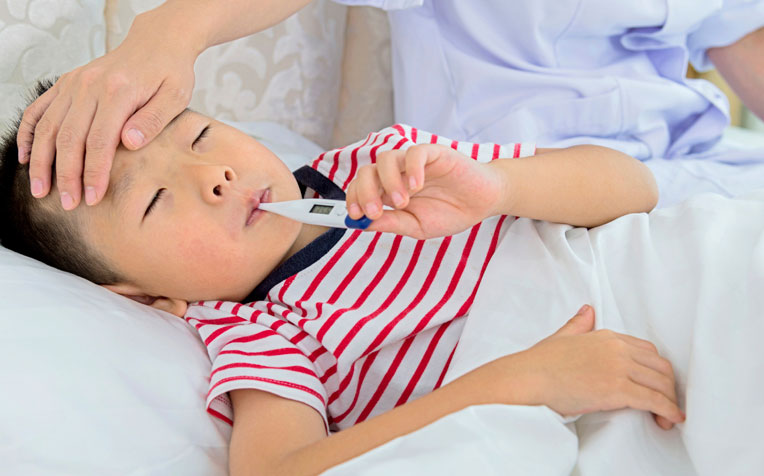Dengue fever, or demam denggi in bahasa, is an infection caused by one of the four dengue viruses transmitted by the Aedes mosquitoes. When an Aedes aegypti or Aedes albopictus mosquito takes a blood meal from an infected person, the virus is picked up and is transmitted to another healthy person as the mosquito takes the next blood meal. The four types of dengue viruses are namely DENV-1, 2, 3 and 4. A person infected by any may have a transient cross protection among the four types, but it is common for people living in dengue endemic areas to be at risk of all four DENV infections. In fact, a person that gets a second infection from a different type of DENV has a higher risk of severe dengue infection. That being said, the presentation of dengue infection ranges from asymptomatic to a broad range of clinical manifestations including mild fever to life-threatening shock syndrome. Different factors such as viral, host and vector play a role in the risk, severity, course and outcome of the disease. Globally, about 390 million dengue infections occur each year, with 96 million being clinically apparent. Incubation period of dengue infection ranges from 3 to 14 days, and symptoms typically develop between 4 and 7 days after being bitten by an infected mosquito. This is particularly important as doctors track the number of days of illness religiously in dengue cases. By knowing the exact course of illness, doctors are able to monitor and prevent potential compilations. Furthermore, it is helpful for public health authorities to trace the most possible locations of exposure and commence fogging to curb the spread of the virus.
Generally, there are three phases in the course of dengue infection; a febrile phase, a critical phase and a recovery phase. The febrile phase starts as soon as the patients complain of a sudden high grade fever of more than 38.5°C accompanied by headache, retro-orbital pain (eye pain), vomiting, myalgia (muscle ache), arthralgia (joint pain), and maculopapular rash in some cases. The flat and raised skin bumps are more common in primary infections, and appears 2 to 5 days after onset of fever. Occasionally it is itchy. Other symptoms include anorexia, abdominal pain, diarrhea, sore throat, cough and nasal congestion. Usually, the febrile phase lasts for 3 to 7 days. During febrile and critical phases, doctors watch out for bleeding tendency or hemorrhagic manifestations. This includes bleeding from the skin and mucosal lining such as the gum, nose, gastrointestinal and vagina. Skin bleeding like petechiae (tiny rounded pinpoint spots) or ecchymoses like skin bruises are a result of bleeding under the skin from ruptured blood vessels. Meanwhile, 40% of female patients had heavier menstrual bleeding, and 10% of patients reported to have melena (black tarry stool due to gastrointestinal bleeding) and epistaxis (nose bleeding).
It is important to note that the fever goes down during the critical phase, but this does not mean the patient has recovered. A small proportion of patients may develop plasma leakage, which leads to shock, respiratory distress and organ impairment. This phase lasts 24 to 48 hours. Dengue patients with persistent vomiting, severe abdominal pain, tender liver, breathing difficulty (from pleural effusion) and lethargy should alert doctors of plasma leakage complications.
During the febrile and critical phases of dengue, patients often have low platelet counts. While bone marrow suppression may play a role, platelet destruction is probably more important. A study found that 10 out of 11 Thai children had shortened platelet survival time, which is thought to be due to the adsorption of dengue virions or virus-antibody immune complexes to the platelet surface, activating the complement system. Bone marrow suppression is backed by in vitro studies that showed dengue virus infects human bone stromal cells and progenitor cells, inhibiting cell growth. Since platelets are one of the cells produced from bone marrow, its suppression leads to low platelet count.



